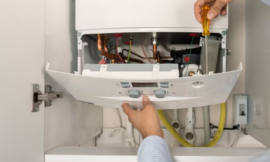In the realm of construction and urban development, the processes of demolition and rubbish removal play critical roles in reshaping landscapes and revitalizing urban spaces. Demolition, the deliberate dismantling of structures, and rubbish removal, the efficient disposal of resulting debris, are integral to the lifecycle of infrastructure projects. Integrated solutions that harmonize these processes not only ensure environmental sustainability but also enhance operational efficiency.
Demolition Techniques: Precision and Safety
Demolition techniques have evolved significantly, reflecting advancements in engineering and safety protocols. Modern demolition practices prioritize precision and safety, aiming to minimize environmental impact and maximize resource recovery. Techniques vary based on the nature of the structure, its location, and surrounding environments.
- Selective Demolition: This technique involves dismantling specific components of a structure while preserving others for reuse or recycling. It is favored in urban areas where space constraints and environmental considerations are paramount. Selective demolition minimizes waste generation and reduces the need for extensive rubbish removal.
- Implosion: Often used for larger structures, implosion involves strategically placing explosives to cause the building to collapse inward on itself. While spectacular, implosion requires meticulous planning to ensure safety and mitigate debris spread. Effective rubbish removal following implosion is crucial to clear the site promptly and prepare it for subsequent construction phases.
- Deconstruction: Unlike traditional demolition, deconstruction involves carefully disassembling a structure by hand to salvage valuable materials such as wood, metal, and architectural elements. This technique promotes sustainability by minimizing waste and supporting recycling efforts. Rubbish removal in deconstruction focuses on segregating materials for proper disposal or recycling, adhering to environmental regulations.
Effective Rubbish Removal: Managing Debris and Waste
Rubbish removal is indispensable in the aftermath of demolition activities. It encompasses the collection, transportation, and disposal of debris and waste materials generated during construction and demolition processes. Effective rubbish removal strategies not only streamline operations but also contribute to environmental stewardship.
- Segregation and Recycling: Sorting debris into recyclable and non-recyclable categories is fundamental to sustainable rubbish removal. Materials such as concrete, metals, and wood can often be recycled or repurposed, reducing landfill waste and conserving natural resources. Integrated solutions incorporate recycling facilities into demolition projects to manage debris efficiently.
- Waste Disposal Management: Proper disposal of non-recyclable waste is critical to maintaining environmental standards. Rubbish removal services employ licensed disposal facilities that adhere to regulations for handling hazardous materials and construction debris. This ensures compliance with local laws and promotes community safety and well-being.
- Technology and Innovation: Advancements in waste management technology enhance rubbish removal efficiency. From automated sorting systems at recycling centers to GPS-tracked waste collection vehicles, technology optimizes logistics and minimizes environmental impact. Integrated solutions leverage these innovations to streamline rubbish removal processes and improve project outcomes.
The Role of Integrated Solutions
Integrated solutions in demolition and rubbish removal integrate these processes seamlessly, promoting synergy between demolition contractors, rubbish removal services, and recycling facilities. This collaborative approach enhances project timelines, reduces costs, and mitigates environmental footprint.
- Project Coordination: Effective project management ensures synchronization between demolition activities and rubbish removal timelines. Clear communication and coordination between stakeholders prevent delays and optimize resource allocation, fostering efficient project execution.
- Environmental Impact: Integrated solutions prioritize environmental sustainability by minimizing waste generation and maximizing material recovery through recycling and reuse. This proactive approach aligns with sustainable development goals, promoting responsible construction practices.
- Community Relations: Demolition and rubbish removal activities often impact local communities. Integrated solutions include community engagement initiatives to inform residents about project timelines, noise mitigation measures, and environmental safeguards. This transparency builds trust and enhances community relations.
Conclusion
Integrated solutions in demolition techniques and effective rubbish removal are essential components of modern construction practices. By harmonizing precision demolition techniques with sustainable rubbish removal strategies, stakeholders uphold environmental stewardship, operational efficiency, and community well-being. As urban landscapes continue to evolve, integrated solutions will play an increasingly pivotal role in shaping sustainable and resilient cities for future generations.



